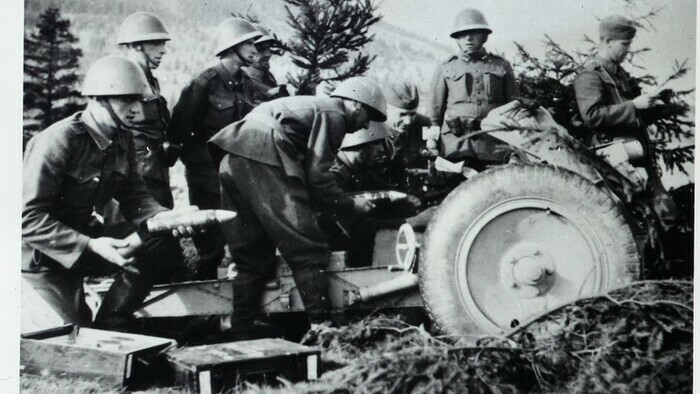Who were General Viest and General Golian?
“Zacnite s vystahovanim, start the eviction,” read the order of Jan Golian, the 1944 Chief of Staff of the Land Forces Command of the Slovak Army. It was announced on 29 August 1944 on the Slovak radio with professor Ladislav Sara reading out the order.
When talking about the Slovak National Uprising that was this way launched in Banska Bystrica on 29 August 1944, it is necessary to take into account that it was one of the three main insurgencies in Europe in the summer 1944. Martin Posch from the Slovak Academy of Sciences names Warsaw uprising, Paris uprising and the Slovak National Uprising in the interview presenting two key personalities of the latter rebellion, General Rudolf Viest and General Jan Golian.
Martin Posch about Generals Viest and Golian
Máte problém s prehrávaním? Nahláste nám chybu v prehrávači.
University Guard Unit
Up until today, not that many Slovaks know about the existence of the University Guard Unit. It was formed at the end of August 1944 in order to protect the two generals in dangerous situations. According to Martin Posch from the Department of History at the Slovak Academy of Sciences, it was forgotten in Slovakia for many years as the majority of its members were later persecuted by the Communist regime having been from the middle and upper class. As the historian says, they did not have that much military experience and training, but they had a very high morale. RSI had the honour to speak to Branislav Tvarozek, a member of the University guard unit who was one of those accompanying General Viest and General Golian in the difficult period of Autumn 1944. At the age of 98, he is sharing his vivid memories of that time.
Branislav Tvarozek about University Guard Unit
Máte problém s prehrávaním? Nahláste nám chybu v prehrávači.
Two ends meet at 29 August street in Most pri Bratislave
At the end of WWII, local Carpathian German inhabitants of Most pri Bratislave, a small village in the vicinity of the capital, were transported to Austria while Slovaks took over the houses they had left behind. Slovak inhabitants were sent here from the regions of Zliechov, Ilava, Cicmany, Rajecka lesna, villages further north that had been helping partisans in 1944 and were thus heavily harmed by German troops after the defeat of the Slovak National uprising in October that year.
Shortly after the end of WWII in May 1945, Slovaks were compensated for their losses by being offered the possibility to move into the property of the displaced German population in the much more fertile south. In a small park in front of the church in Most pri Bratislave located on one end of the now 29 August street, the local Germans were gathered in order to be moved away in 1945. At the other end of this particular street, Slovaks who moved to this village erected a monument in memory of the events of 29 August 1944 that led to the displacement of citizens on both sides, of the winners as well as losers.
29 August street in Most pri Bratislave
Máte problém s prehrávaním? Nahláste nám chybu v prehrávači.

